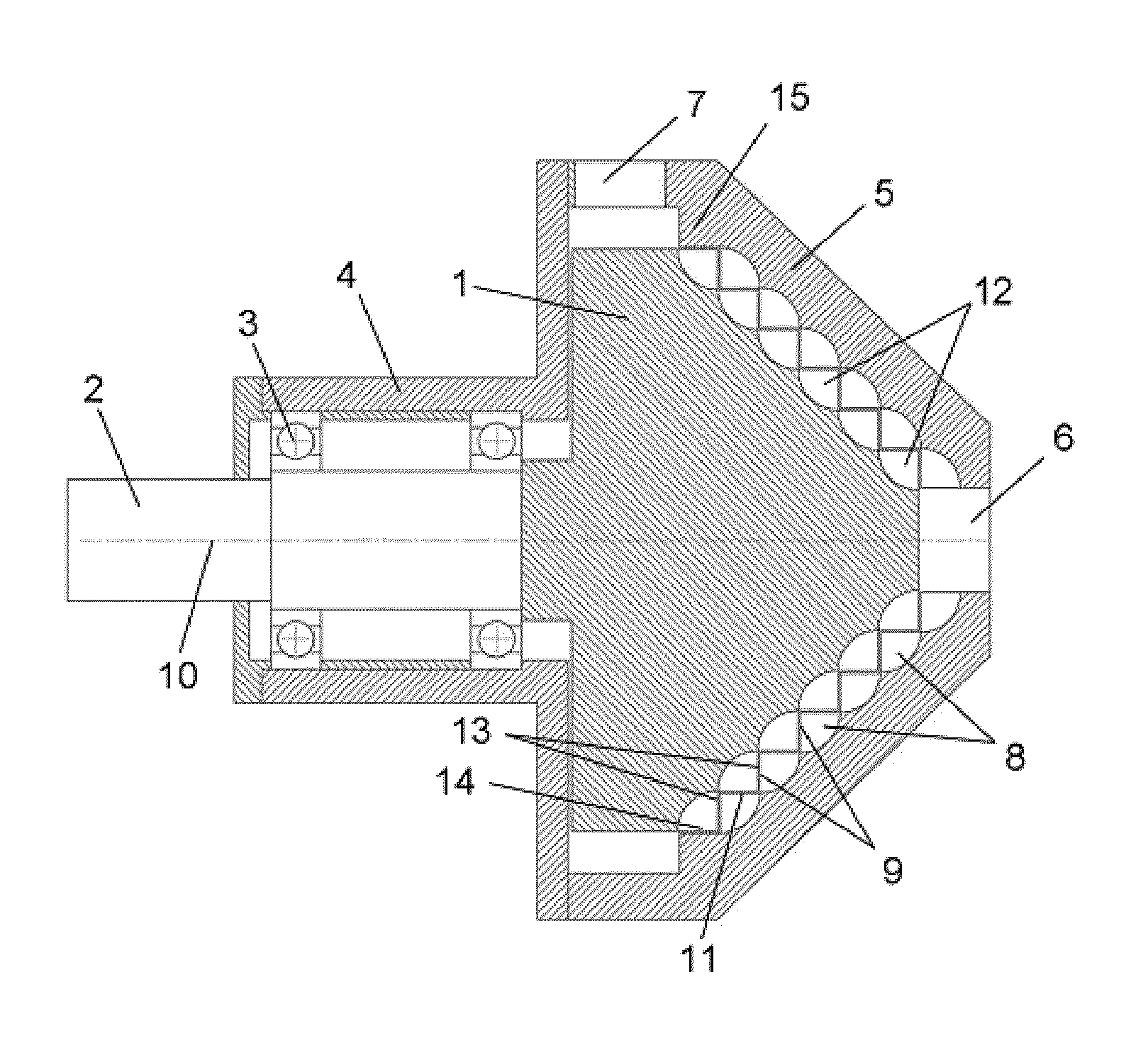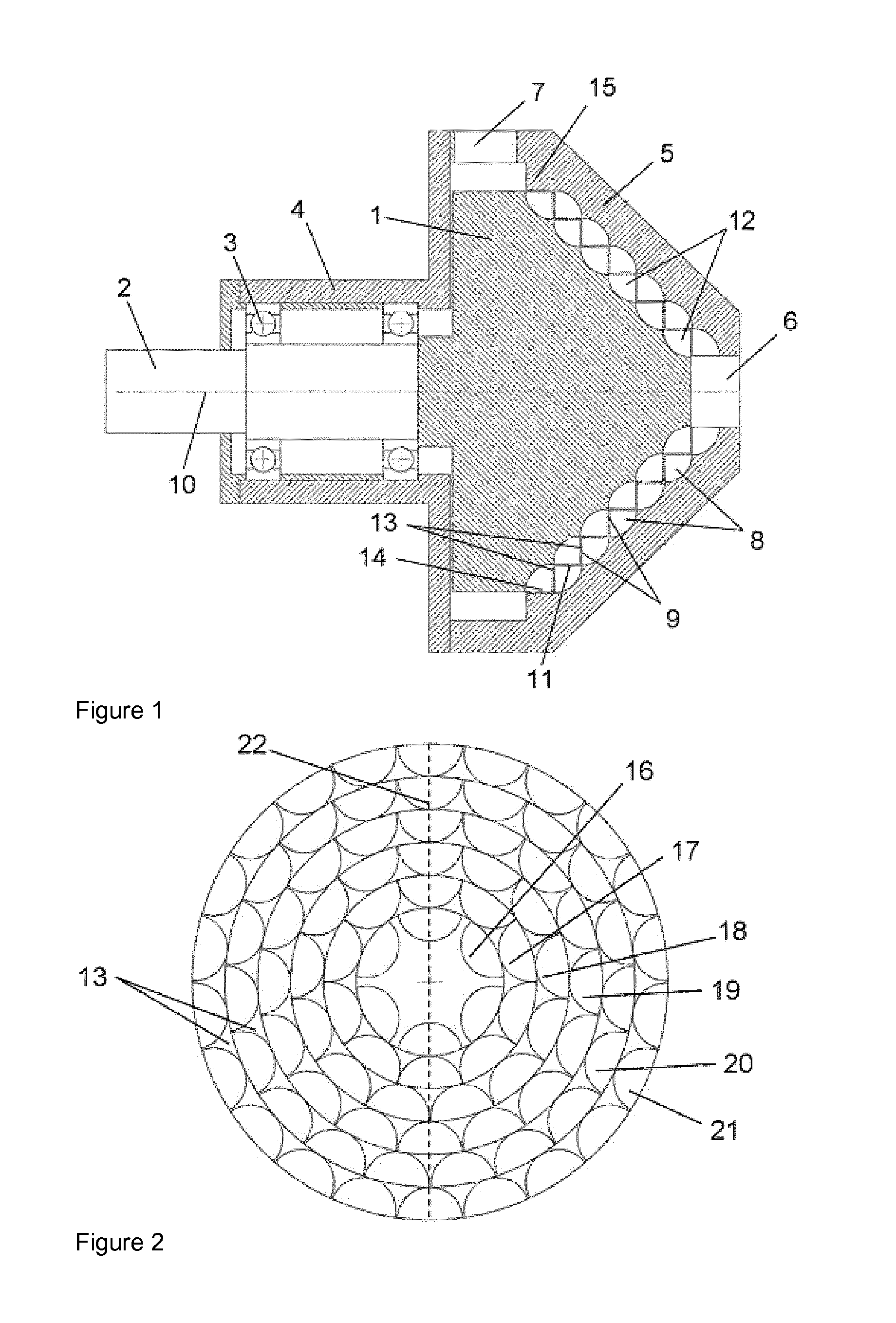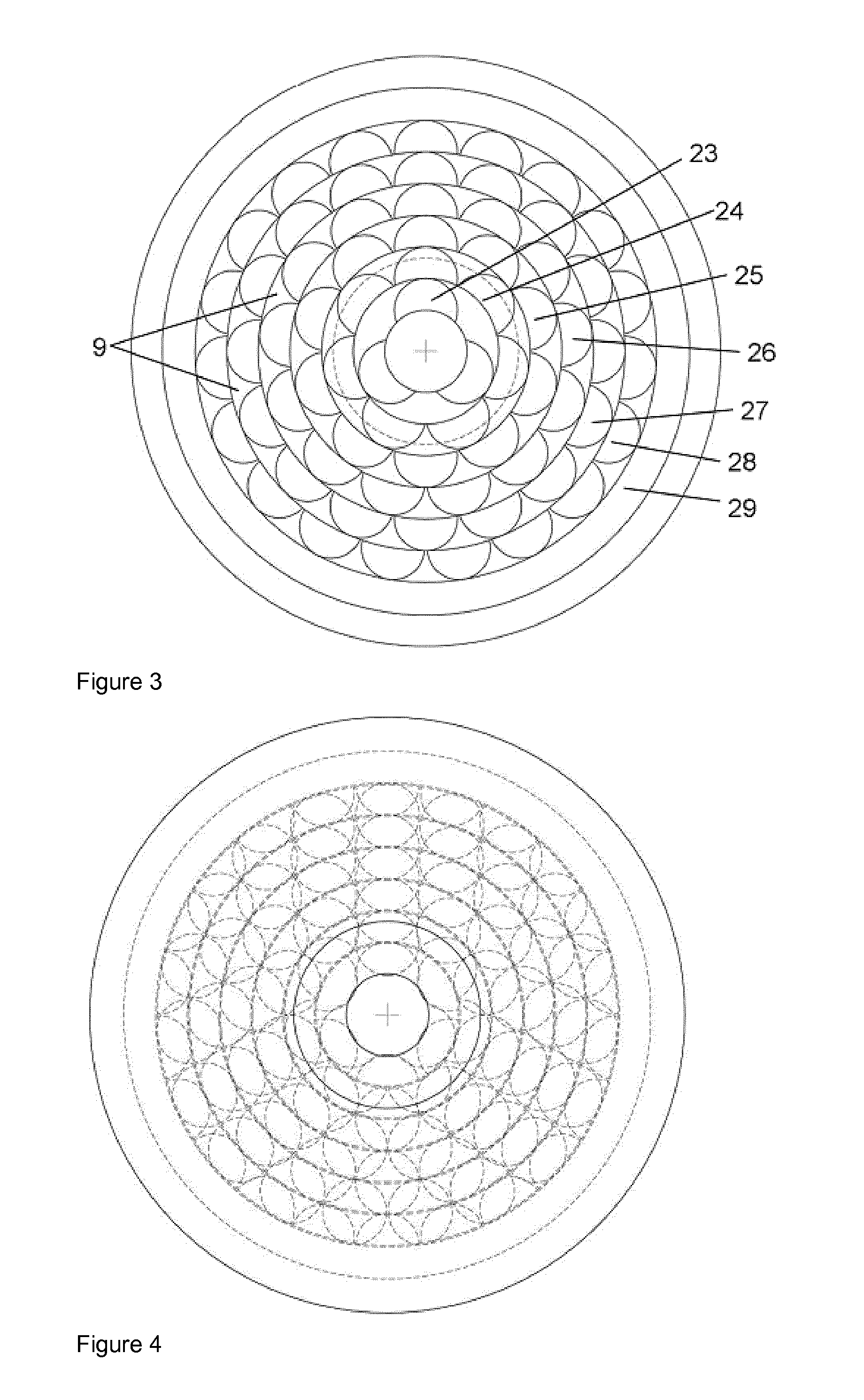Mixing apparatus and method of preparing edible dispersions
a technology of mixing apparatus and edible dispersions, which is applied in the direction of mixing methods, mixers, food science, etc., can solve the problems of not being considered an optimal choice for mixing devices, requiring a lot of energy, and affecting the quality of edible dispersions,
- Summary
- Abstract
- Description
- Claims
- Application Information
AI Technical Summary
Benefits of technology
Problems solved by technology
Method used
Image
Examples
examples
Water Droplet Size Distribution of Spreads (D3,3 Measurement)
[0114]The normal terminology for Nuclear Magnetic Resonance (NMR) is used throughout this method. On the basis of this method the parameters D3,3 and exp(σ) (a.k.a. e^sigma) of a lognormal water droplet size distribution can be determined. The D3,3 is the volume weighted mean droplet diameter and σ is the standard deviation of the logarithm of the droplet diameter.
[0115]The NMR signal (echo height) of the protons of the water in a water-in-oil emulsion are measured using a sequence of 4 radio frequency pulses in the presence (echo height E) and absence (echo height E*) of two magnetic field gradient pulses as a function of the gradient power. The oil protons are suppressed in the first part of the sequence by a relaxation filter. The ratio (R=E / E*) reflects the extent of restriction of the translational mobility of the water molecules in the water droplets and thereby is a measure of the water droplet size. By a mathematic...
PUM
| Property | Measurement | Unit |
|---|---|---|
| diameter | aaaaa | aaaaa |
| diameter | aaaaa | aaaaa |
| diameter | aaaaa | aaaaa |
Abstract
Description
Claims
Application Information
 Login to View More
Login to View More - R&D
- Intellectual Property
- Life Sciences
- Materials
- Tech Scout
- Unparalleled Data Quality
- Higher Quality Content
- 60% Fewer Hallucinations
Browse by: Latest US Patents, China's latest patents, Technical Efficacy Thesaurus, Application Domain, Technology Topic, Popular Technical Reports.
© 2025 PatSnap. All rights reserved.Legal|Privacy policy|Modern Slavery Act Transparency Statement|Sitemap|About US| Contact US: help@patsnap.com



